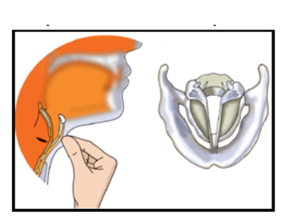Class 8 MAHARASHTRA STATE TEXTBOOK BUREAU Solutions Science Chapter 15: Sound
Sound Exercise Exercise
Solution 1a
Answer: Compression, Rarefaction.
The region of a sound wave with higher pressure and density is known as compression, while the region with lower pressure and density is known as rarefaction.
Solution 1b
Answer: required
From the bell experiment we know that sound required medium for propagation.

Solution 1c
The total number of compressions and rarefactions produced per second in a sound wave is 1000. The frequency of the sound wave is 500 Hz.

(i.e., One cycle of sound wave has one loop of compression and rarefaction.)
Solution 1d
Answer: Frequencies
As we know different sound nodes have different frequencies as we can see in fig (A) and(B) respectively.

Solution 1e
Answer: Electrical, Sound
A loudspeaker is a device that converts electrical energy into sound energy.
Solution 2a
The voice box or the larynx in humans produces sound and the voice box is located at the top of the windpipe.
The two vocal cords in the larynx vibrate and produce sound when we speak.

These vocal cords are stretched across the voice box or larynx, allowing air to pass through a narrow slit between them.
As a result, various sound notes correspond to various frequencies. The frequency of sound is determined by the amount of tension in the vocal cords.
Thus, changing the tension in the vocal cords is critical, as we produce different sound notes with our larynx.
Additional info:
The vocal cords are about 20 mm long in men, 15 mm long in women (5 mm shorter) and they are very short in children.
Solution 2b
Sound requires medium to propagate. It cannot travel in vacuum.
As a result astronauts on moon cannot communicate directly and thus they use radio communication or sign language for direct communication with each other.
Solution 2c
Sound travels through air due to the transfer of energy from vibrating air molecules in one region to those in the adjacent region away from the source.

The air molecules simply vibrate around their centre of mass. As a result, the air does not need to move from one location to another.
Solution 3
As we all know, some instruments produce sound due to membrane vibration, others due to string vibration, and still others due to air column vibration.

Stringed instruments include the sitar, violin, guitar, and ektara. The tabla, manjira (cymbals), ghatam, and kartal all rely on membrane vibration. The vibration of an air column produces sound in instruments such as the flute and trumpet.
Solution 4
Larynx is the organ that is involved in the production of sound in humans. It is also called as voice box.
The voice box is situated in the neck at the upper end of the wind pipe. The sound produced is controlled by vocal cords which are thin membranes stretched across the voice box. There are muscles that are attached to the vocal cords.

These muscles can vary the tension in the vocal cords. With the help of these muscles, we can make different sounds.
Whereas, in case of loudspeaker a speaker speaks out his words and those words are converted into electrical signals which can be carried to great distances and then received by the listener.
The signals are then converted back to sound and the amplified sound is heard to the listener.
Ex: Music amplified by loudspeakers during concert.
Solution 5
To prove that, sound needs material or medium for propagation we can do the below experiment.
First connect the bell to the battery so that it starts ringing. Arrange the bell jar around the bell and connect it to a vacuum pump.

Start the vacuum pump to begin removing air from the bell jar. Keep an ear out for the sound of the ringing bell.
We notice that the sound of the bell continues to be heard after the bell jar is placed over it. As the air inside the bell jar slowly escapes, the sound becomes dimmer and dimmer until we can no longer hear it at all.
However, the bell continues to ring. As a result, we conclude that the bell reaches us via the air in the bell jar.
Even though the bell is vibrating when the vacuum pump removes air from the bell jar, the sound does not reach us.

